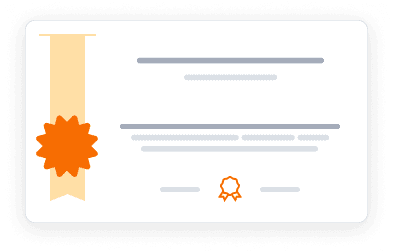Master cutting-edge visualization techniques for biomedical science, including 3D modeling, animation, and virtual reality applications.
Master cutting-edge visualization techniques for biomedical science, including 3D modeling, animation, and virtual reality applications.
This innovative course explores advanced visualization techniques in biomedical science, combining traditional anatomical knowledge with modern digital technologies. Students learn fundamental anatomical concepts while mastering industry-standard software like Blender for 3D modeling and animation. The curriculum covers various visualization methods, from microscopic imaging to virtual and augmented reality applications in medical science, preparing learners for the digital future of biomedical visualization.
4.6
(458 ratings)
33,348 already enrolled
Instructors:
English
English (Original), Deutsch (Auto), हिन्दी (ऑटो), 19 more
What you'll learn
Master anatomical terminology and concepts
Create 3D models using Blender software
Understand virtual and augmented reality applications
Apply visualization techniques to biomedical data
Analyze various visualization methods
Develop practical animation skills
Skills you'll gain
This course includes:
138 Minutes PreRecorded video
12 assignments
Access on Mobile, Tablet, Desktop
FullTime access
Shareable certificate
Get a Completion Certificate
Share your certificate with prospective employers and your professional network on LinkedIn.
Created by
Provided by

Top companies offer this course to their employees
Top companies provide this course to enhance their employees' skills, ensuring they excel in handling complex projects and drive organizational success.





There are 4 modules in this course
The course comprises four comprehensive modules covering the fundamentals of biomedical visualization. Starting with human anatomy and visualization basics, students progress through 3D modeling and animation techniques, followed by virtual and augmented reality applications. The curriculum culminates in exploring extended reality and future trends in medical visualization, combining theoretical knowledge with practical skills development.
Introduction to Visualisation and the Human Body
Module 1 · 4 Hours to complete
3D Models and Animation
Module 2 · 4 Hours to complete
Virtual Reality and Augmented Reality
Module 3 · 5 Hours to complete
Extended Reality: The Realities and The Future
Module 4 · 7 Hours to complete
Fee Structure
Payment options
Financial Aid
Instructors
Expert in Medical Visualization and Anatomical Education
Amy Webster is a specialized educator in biomedical visualization at the University of Glasgow, bringing together her expertise in neuroscience and medical visualization. With a BSc (Hons) in Neuroscience and an MSc in Medical Visualisation and Human Anatomy, she has contributed significantly to the development of the groundbreaking Coursera course "Biomedical Visualisation." The course, which has attracted over 33,000 enrollments, combines anatomical education with cutting-edge visualization techniques using Blender 3D software
Testimonials
Testimonials and success stories are a testament to the quality of this program and its impact on your career and learning journey. Be the first to help others make an informed decision by sharing your review of the course.
Frequently asked questions
Below are some of the most commonly asked questions about this course. We aim to provide clear and concise answers to help you better understand the course content, structure, and any other relevant information. If you have any additional questions or if your question is not listed here, please don't hesitate to reach out to our support team for further assistance.





